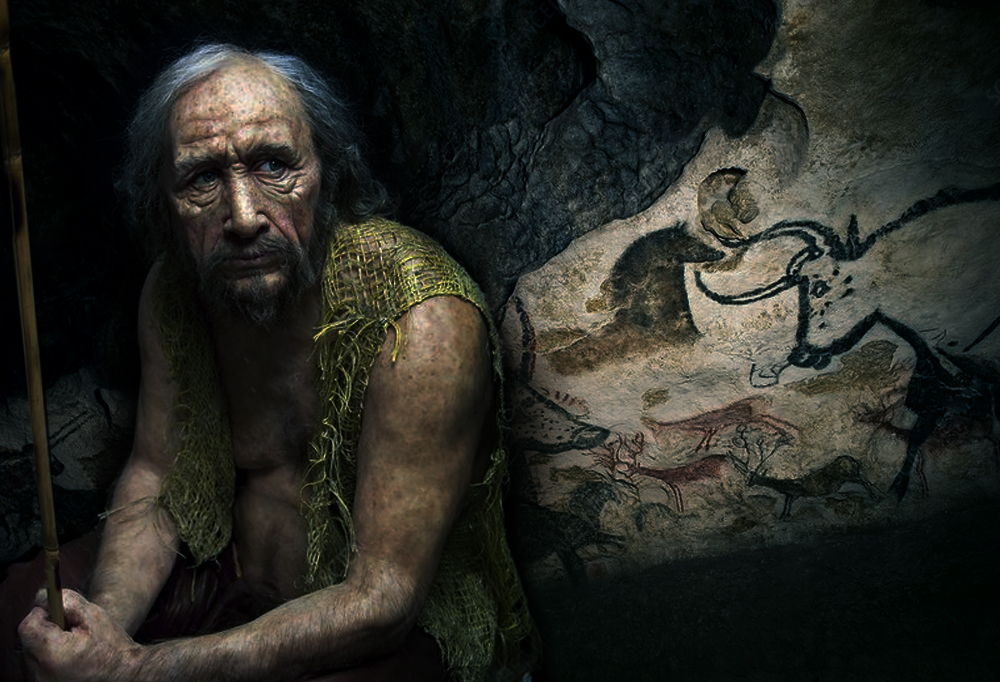The Dawn of the Cro-Magnons
Cro-Magnons known as the early Homo sapiens dates back from 45,000 to 10,000 years ago (Upper Paleolithic Period).
Cro-Magnons were built with more elongated muscles than Neanderthals, although similarly powerful, and are presumed to have been about five feet five inches to five feet nine inches tall, although taller specimens probably occurred. The body was generally not as heavy and solid as a Neanderthal body, but probably more capable of long, fast running than the Neanderthals. The forehead was straight, with slight brow ridges, and the face short and wide.
Cro-Magnons were the first humans (genus Homo) to have a prominent chin. The brain capacity was about 1,600 cc (100 cubic inches), somewhat larger than the average for modern humans. It is thought that these species were probably fairly tall compared with other early human species.
Like the Neanderthals, the Cro-Magnon people buried their dead. Some of the first examples of art by prehistoric peoples are Cro-Magnon. The Cro-Magnons carved and sculpted small engravings, reliefs, and statuettes not only of humans but also of animals. Their human figures generally depict large-breasted, wide-hipped, and often obviously pregnant women, from which it is assumed that these figures had significance in fertility rites. Numerous depictions of animals are found in Cro-Magnon cave paintings throughout France and Spain at sites such as Lascaux, Eyzies-de-Tayac, and Altamira, and some of them are surpassingly beautiful. It is thought that these paintings had some magic or ritual importance to the people. From the high quality of their art, it is clear that Cro-Magnons were not primitive amateurs but had previously experimented with artistic mediums and forms. Decorated tools and weapons show that they appreciated art for aesthetic purposes as well as for religious reasons.


